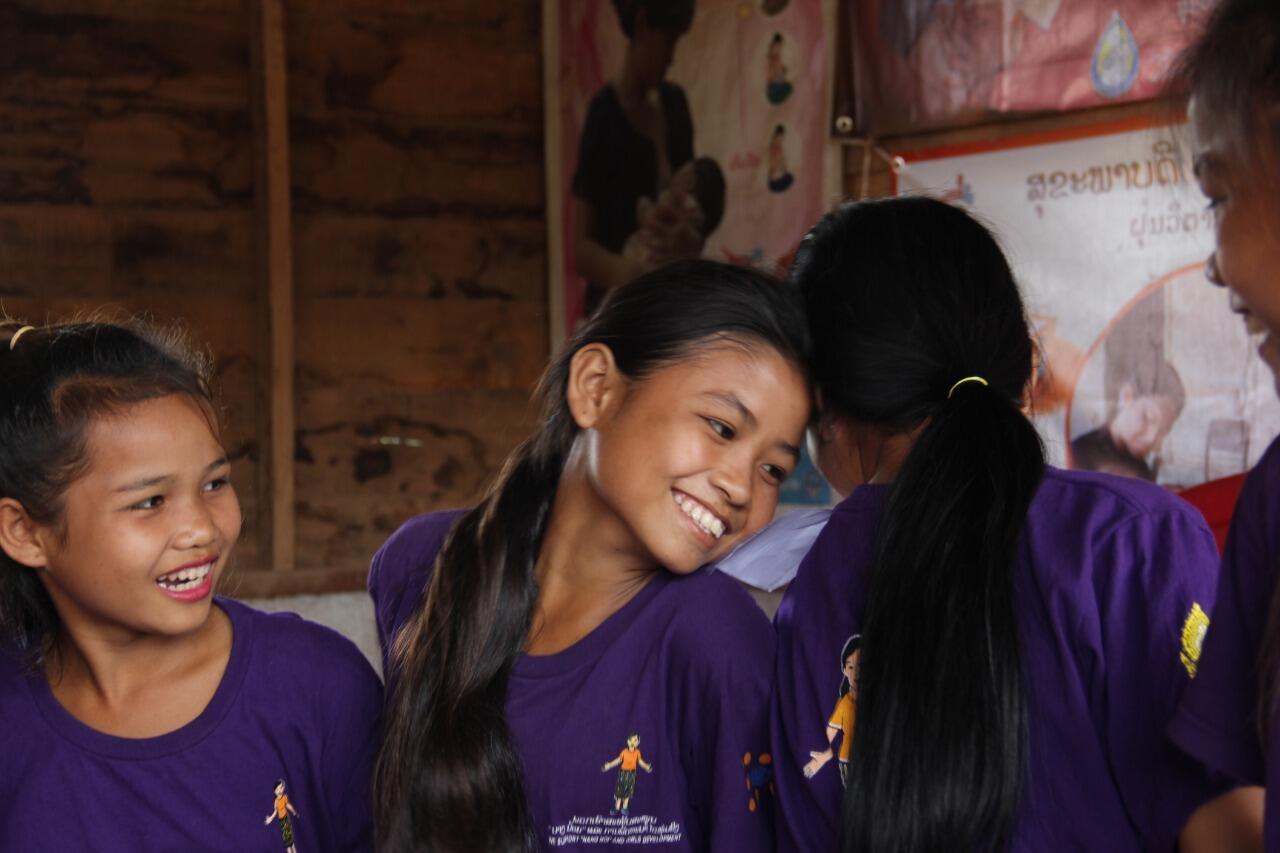Adolescent girls are members of the largest cohort of young people in history. In Lao PDR, they will have tremendous influence on the shape of our shared future. Will it be one of thriving societies, or of shrinking opportunities? Our choices today will make a difference. What we do for and with adolescents will impact families, communities, societies and the structures they work within.
Based on the population dynamic, from 2020, the number of adolescents in Lao is projected to reach approximately 1.1 million by 2028 .
Adolescent girls transition to adulthood includes social as well as systemic obstacles: school drop out, early marriage, adolescent pregnancy and maternal mortality, child labor, gender based violence, informal work. The COVID-19 pandemic risks not only reversing progress made for girls’rights, but may also lead to increased incidents of unplanned pregnancy, gender based violence and early marriage.
The right investments in the education skills building and health now through the 9th NSEDP could build the human capital, minimise social and economic setbacks and improve enjoyment of human rights.
Lao PDR renewed its commitments to the International Conference on Population and Development with strong emphasis on delivering results for Adolescent girls, in line with the Sustainable Development Goals.
The Data imperative:
To know who is at risk of being left behind, where they are and what particular issues they face, what age do the issues begin at, it is vital to support the availability of data disaggregated by age, sex, region, wealth quintile through population data which, combined with geo spatial analysis can be made available to decision makers in a timely manner to inform their decisions on budgeting and implementation. It is through effective availability, analysis and use of disaggregated data that in recent years interventions for delivering life skills to youth, youth friendly sexual reproductive health services, comprehensive sexuality education, and essential service packages for gender based violence survivors have been steadily growing. COVID -19 impact data, led to scaling up availability of mental health and psychosocial support not just for youth but for all age groups.
The Rights imperative
Drawing from global instruments such as UPR, CEDAW and CRC, the rights of girls are increasingly captured in frameworks such as: the National Population and Development Policy, Noi framework, the Reproductive, Maternal, Newborn, Child & Adolescent Health Policy, the National Action Plan for Prevention and Elimination of Violence Against Women amongst others. They are also part of sectoral plans and discussions at the community level.
Accelerated implementation of the existing policies and plans though adequate budgeting would go a long way to delivering on the rights of adolescent girls.
The Demographic imperative:
Making the most of the dividend, requires that girls are prepared to not just participate in the workforce, but that their contributions once in the workforce are counted within the economic sector, that they have access to formal employment and benefit from social security. They need to be well-educated and healthy, empowered to make choices about if and who to marry, if when and how many children to have, be empowered to find decent work and to say no to violence and harmful practices.
Building this human capital requires smart investments particularly during adolescence as the large adolescent cohort transitions into adulthood to join the workforce. Skill and capacity building interventions responsive to the realities of adolescent girls, whether she is rural or urban, in or out of school, she should be able to access life skills and Phed Suk Sa at school or through Nang-Noi girls groups.
The Sustainable development imperative
UNFPA’s support to the Government of Lao is embedded in sustainability, reflected in the increase of domestic resources for family planning including commitments to increase adolescents and unmarried access to contraception. The delivery of comprehensive sexual and reproductive health education due to go to scale nationwide in schools, relies on building capacities of teachers. While the quality and availability of healthcare services focuses on ensuring midwives and health care providers receive pre service training and get deployed per population needs.
Embracing the financing for development approach, diverse and growing number of partnerships through which innovative strategies are rolling out delivery of the Lao PDR commitments to ICPD25. Partners like Plan International and ChildFund are scaling up Noi related Phed Suk Sa to extend the coverage of comprehensive sexuality education, particularly for out of school girls. Private sector partners including Sinouk coffee, Banque Franco Lao and Crowne Plaza are contributing to the development of life skills of girls and supporting them to create their own small business. Innovative solutions are constantly being tested to empower girls and to improve accessibility of services including through mobile clinics, virtual solutions (Noi Yakhoo App) remote delivery of public health information and services which is being tested in Luang Prabang as part of the Covid response and resilience building.
Continuously piloting innovative approaches while partnering to take successful ones to scale are integral elements of UNFPA’s approach to delivering a world where every young person’s potential is fulfilled!
************
UNFPA, the UN's sexual and reproductive health agency, works in over 150 countries including Lao PDR, to achieve zero maternal deaths, zero unmet need for family planning and zero gender-based violence and harmful practices towards women and girls.


